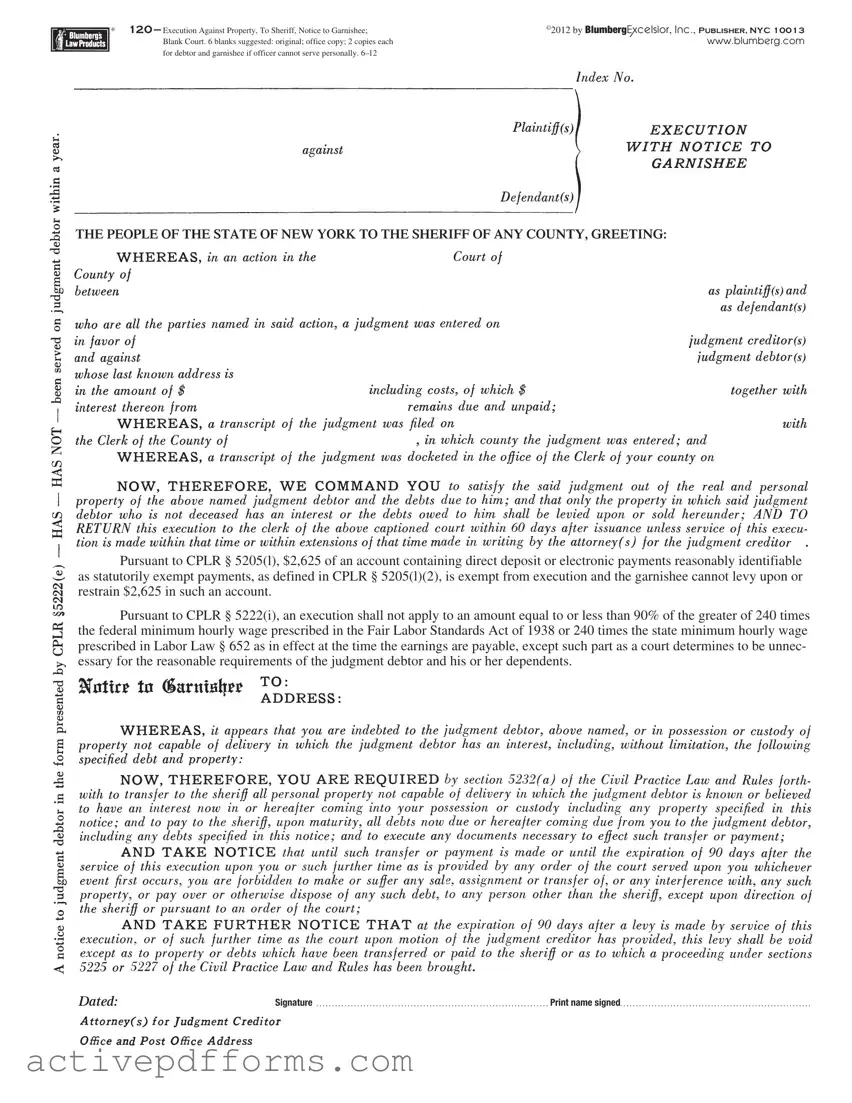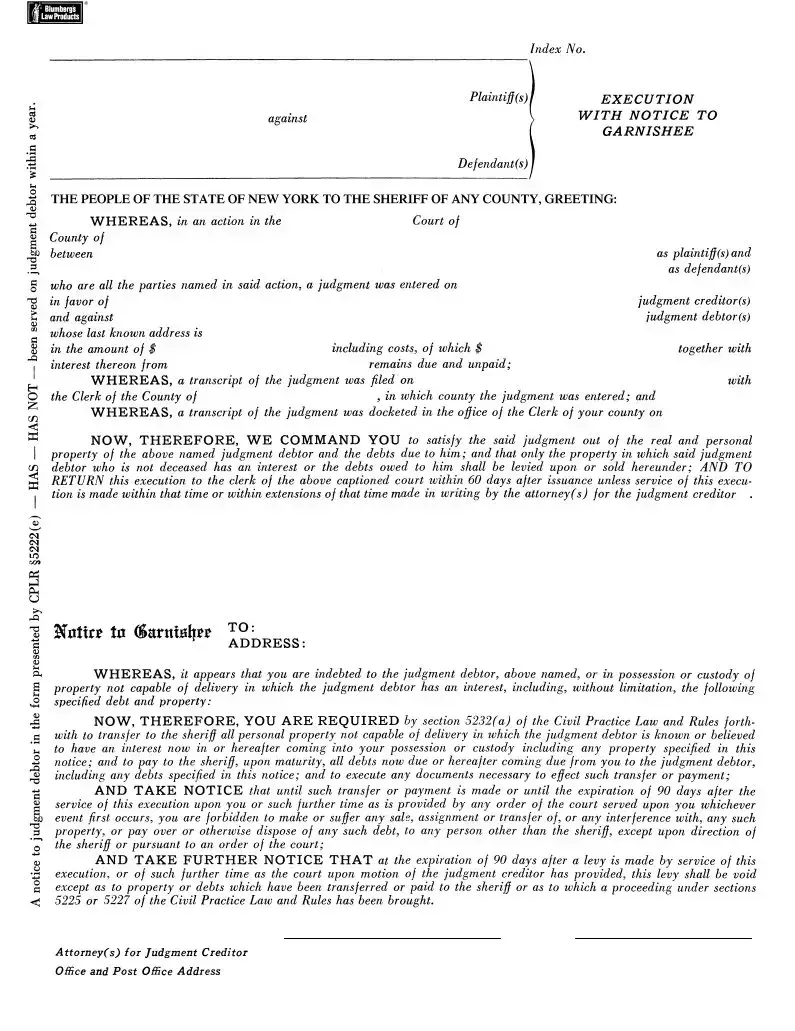Free Blumberg 120 PDF Template
The Blumberg 120 form, officially titled "Execution Against Property, To Sheriff, Notice to Garnishee," serves a critical function in the legal process, enabling creditors to claim debts from a debtor's property through the assistance of a sheriff and informing the garnishee of such action. This document, copyrighted in 2012 by BlumbergExcelsior, Inc., addresses the necessary copies distribution, including for the debtor and garnishee, and outlines specific exemptions to protect a portion of the debtor's assets from seizure. Notably, it incorporates provisions under CPLR § 5205(l) and § 5222(i), safeguarding a portion of wages and directly deposited funds, showcasing the balance between creditor rights and debtor protection.
Edit Blumberg 120 Now


